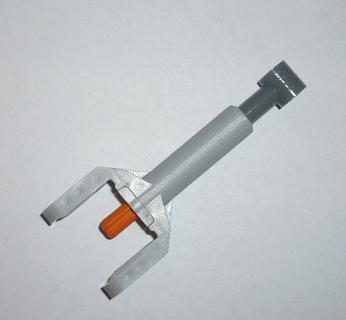I'd like to be able to blow a constant stream of air for up to two minutes. The purpose of this blowing element would be to play a harmonica, using holes punched in a roll of paper/film to expose certain notes. The film will be mechanically propelled in one direction by a motor.
Would pneumatic pieces be required? (I have had a very limited experience with pneumatics)
Key Points:
- I would prefer to use as few non-LEGO pieces as possible.
- The blowing element must be able to reach all notes 1-10 evenly. Each hole in the harmonica is 5x5mm with 2mm in between each note for a total width of 68mm lengthwise.
- The sound created by the blowing device must not exceed the sound produced by the harmonica.
- Optional Bonus: The device can also be adjusted to suck air to create a different sounding note.
